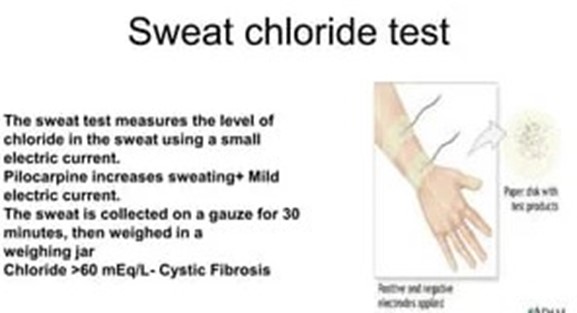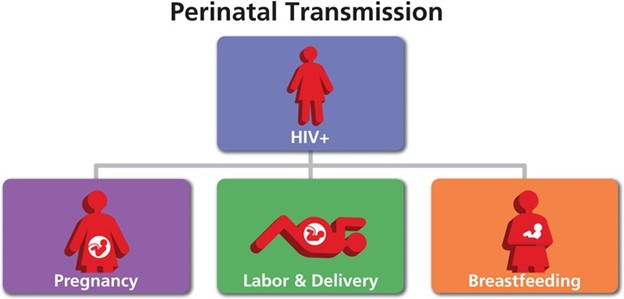Cystic fibrosis (CF) is suspected in a toddler. Which test is essential in establishing this diagnosis?
Bronchoscopy
Serum calcium
Urine creatinine
Sweat chloride test
The Correct Answer is D
This test measures the amount of chloride in the sweat, which is abnormally high in people with cystic fibrosis (CF). CF is an inherited disorder that affects the cells that produce mucus, sweat, and digestive juices.

Choice A is wrong because bronchoscopy is a procedure that allows the doctor to examine the airways and lungs, but it is not essential for diagnosing CF.
Choice B is wrong because serum calcium is a blood test that measures the level of calcium in the blood, which is not related to CF.
Choice C is wrong because urine creatinine is a test that measures the amount of creatinine in the urine, which reflects the kidney function, but it is not relevant to CF.
Normal ranges for sweat chloride test are:
- Less than 40 millimoles per liter (mmol/L) for children and adults
- Less than 30 mmol/L for infants younger than 6 months
A sweat chloride level of more than 60 mmol/L is considered positive for CF.
Nursing Test Bank
Naxlex Comprehensive Predictor Exams
Related Questions
Correct Answer is ["B","D"]
Explanation
Sleepiness or fatigue and puffiness around the eyes are symptoms associated with hypothyroidism. Hypothyroidism is a condition where the thyroid gland does not produce enough thyroid hormones, which regulate the body’s metabolism and energy levels.
Choice A is wrong because weight loss is more likely to occur in hyperthyroidism, a condition where the thyroid gland produces too much thyroid hormones.
Choice C is wrong because diarrhea is also more likely to occur in hyperthyroidism, as the excess thyroid hormones speed up the digestive system.
Choice E is wrong because limited hair growth is not a specific symptom of hypothyroidism. Hair loss or thinning may occur in both hypothyroidism and hyperthyroidism, depending on the severity and duration of the condition.
Normal ranges for thyroid hormones are:
- TSH: 0.4 to 4.0 mIU/L
- T3: 100 to 200 ng/dL
- T4: 4.5 to 11.2 mcg/dL
Correct Answer is D
Explanation
The correct answer is choice D. Perinatal transmission of HIV is when HIV is passed from a woman with HIV to her child during pregnancy, childbirth, or breastfeeding.

Breast milk from an infected mother can contain HIV and infect the baby.
Choice A is wrong because HIV can be transmitted at any stage of pregnancy, not only in the third trimester.
Choice B is wrong because needlestick injury is not a common mode of perinatal transmission of HIV. It is more likely to occur among health care workers who are exposed to contaminated needles or sharp objects.
Choice C is wrong because HIV can also be transmitted through the ingestion of amniotic fluid, but it is not the only way. Amniotic fluid is the fluid that surrounds and protects the baby in the womb.
Whether you are a student looking to ace your exams or a practicing nurse seeking to enhance your expertise , our nursing education contents will empower you with the confidence and competence to make a difference in the lives of patients and become a respected leader in the healthcare field.
Visit Naxlex, invest in your future and unlock endless possibilities with our unparalleled nursing education contents today
Report Wrong Answer on the Current Question
Do you disagree with the answer? If yes, what is your expected answer? Explain.
Kindly be descriptive with the issue you are facing.
